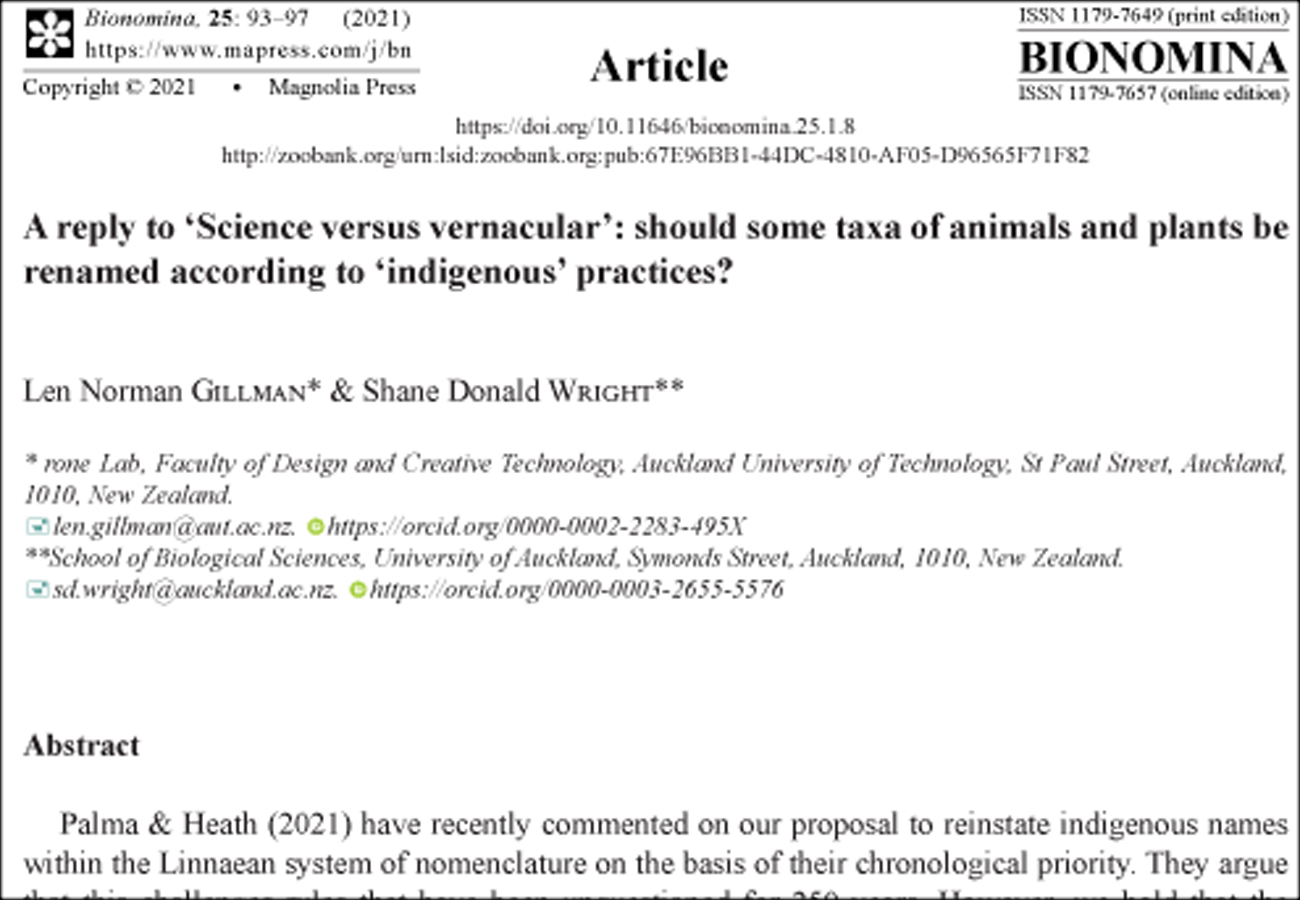Abstract
Palma & Heath (2021) have recently commented on our proposal to reinstate indigenous names within the Linnaean system of nomenclature on the basis of their chronological priority. They argue that this challenges rules that have been unquestioned for 250 years. However, we hold that the rules of the various codes of nomenclature are constantly under review. The opinion they prosecute crystallises down, in large part, to one that suggests that because there are pre-existing rules about priority, we should not change these: an argument that involves a degree of circularity. Unfortunately, Palma and Heath misinterpret our proposal throughout much of their discussion. We do not advocate replacing the binomina as is claimed nor do we advocate for name changes where there is no consensus on a given taxon among the people indigenous to the natural distribution of that taxon. Our proposal is that indigenous names can replace the species epithet where there is a consensus on a single indigenous name for a taxon throughout its distribution and where there is demonstrable temporal priority. Without such consensus, species that cover wide distributions and have multiple indigenous names will, under our proposal, remain unchanged in their nomenclature.
References
- Gillman, L. N. & Wright, S. D. (2020) Restoring indigenous names in taxonomy. Communications Biology, 3 (1) [609]: 1‒3. <https://doi.org/10.1038/s42003-020-01344-y>.
- Palma, R. L. & Heath, A. C. (2021) Science versus vernacular: should some taxa of animals and plants be renamed according to ‘indigenous’ practices? Bionomina, 22: 1‒7. <https://doi.org/10.11646/bionomina.22.1.1>.
- Rummy, P. & Rummy, J. T. (2021) Recontextualising the style of naming in nomenclature. Humanities and social Sciences Communications, 8 (1) [283]: 1‒6. <https://doi.org/10.1057/s41599-021-00975-8>.
- Turland, N. J., Wiersema, J. H., Barrie, F. R., Greuter, W., Hawksworth, D. L., Herendeen, P. S., Knapp, S., Kusber, W.-H., Li, D.-Z., Marhold, K., May, T. W., McNeill, J., Monro, A. M., Prado, J., Price, M. J. & Smith, G. F. (ed.) (2018) International code of nomenclature for algae, fungi, and plants (Shenzhen Code) adopted by the Nineteenth International Botanical Congress Shenzhen, China, July 2017. Regnum Vegetabile, 159. Glashütten, Germany (Koeltz Botanical Books). <https://doi.org/10.12705/Code.2018>.
- Wright, S. D. & Gillman, L. N. (2021) Replacing current nomenclature with pre-existing indigenous names in algae, fungi and plants. Taxon, in press. <https://doi.org/https://doi.org/10.1002/tax.12599>.


